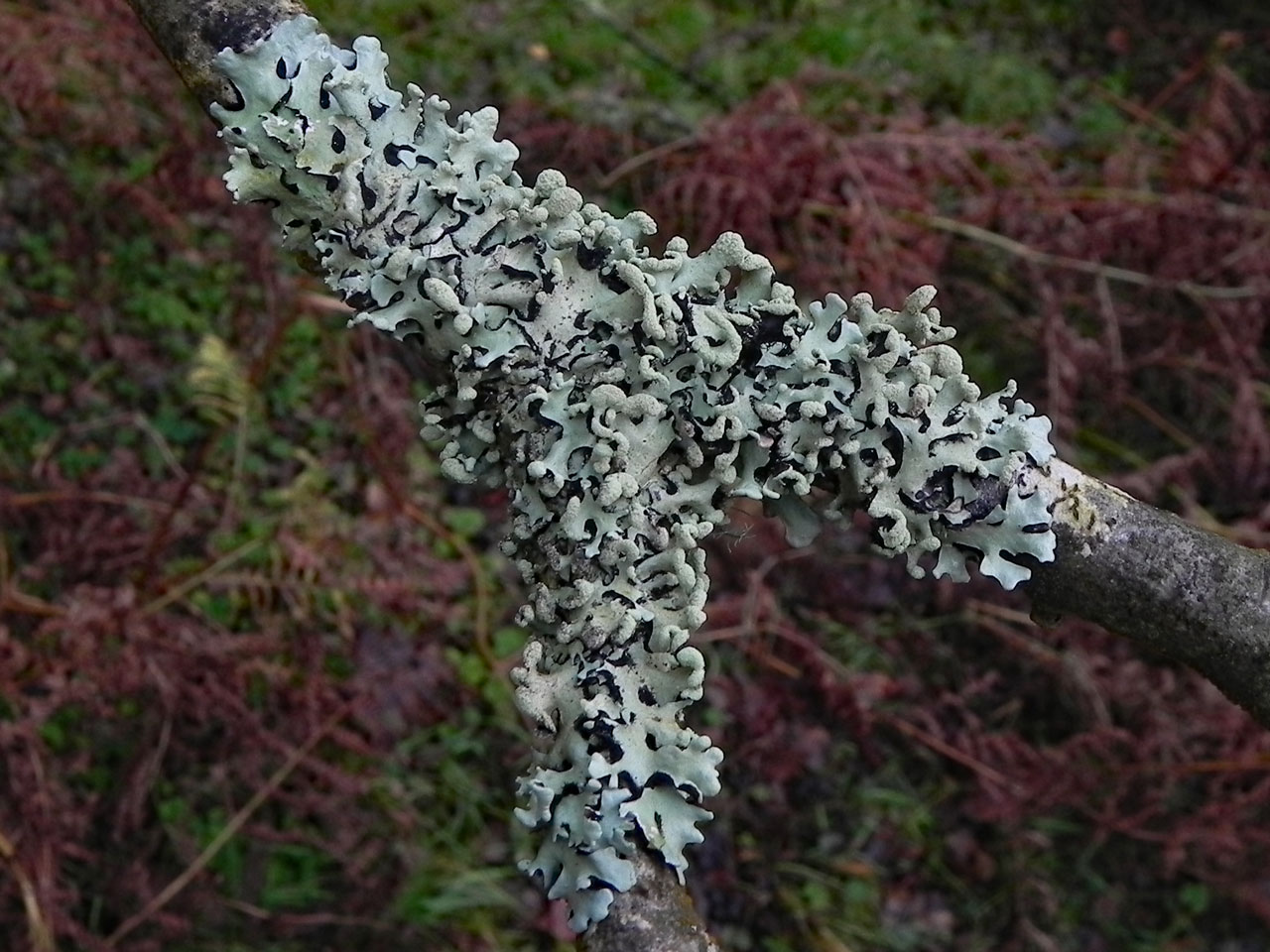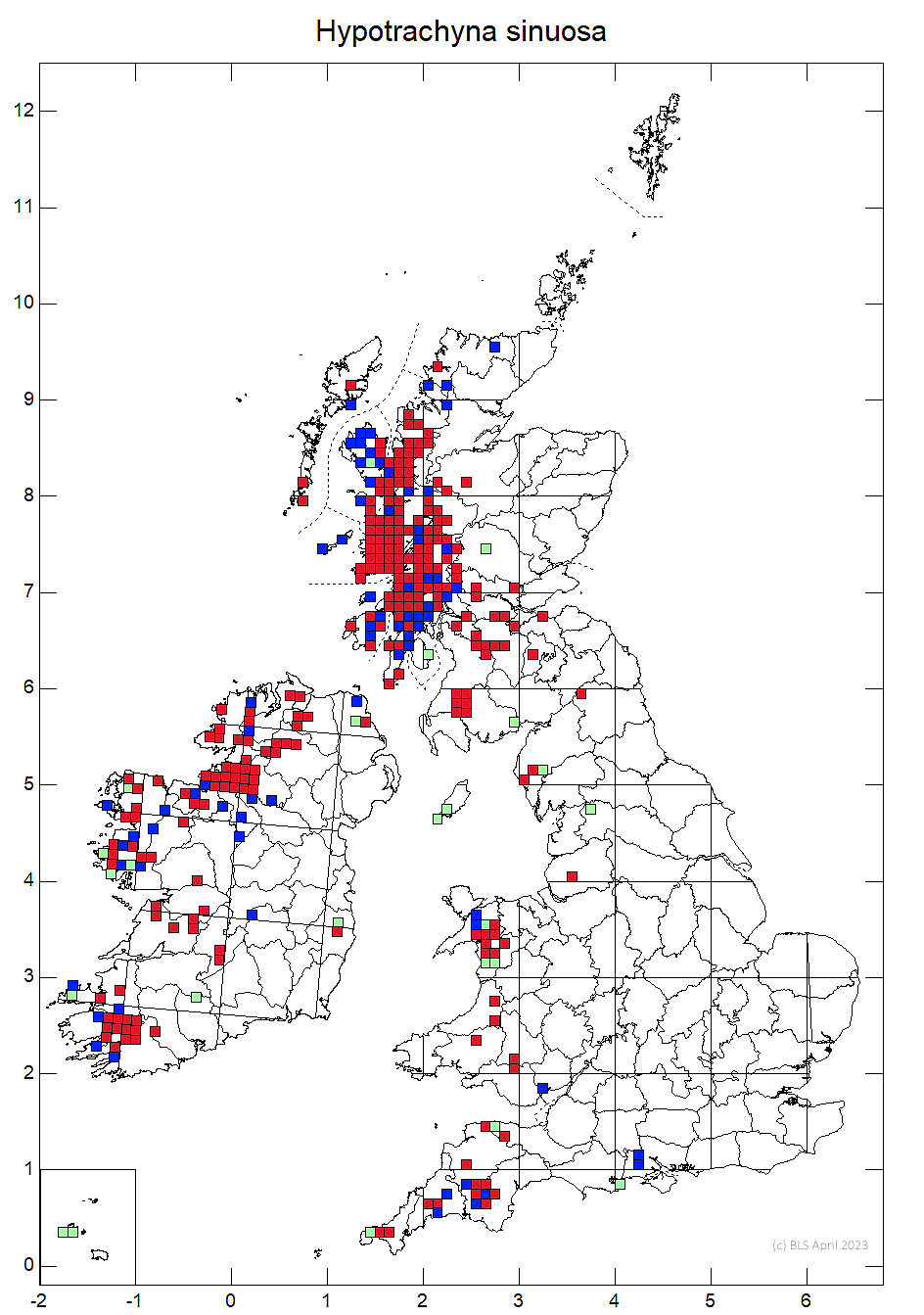Draft
Thallus 1–4 (–6) cm diam., rather compact, sometimes forming extensive patches; lobes (1–) 2–5 mm broad, separate or partly contiguous, overlapping centrally, dichotomously branched with wider, often ascending, truncate apices, axils markedly sinuate; upper surface yellow-grey to yellow-green, smooth, ± shiny, sorediate; soralia covering apices of ascending lobes, ± globose; soredia farinose; lower surface jet- black, rhizines dichotomously branched, numerous, often projecting beyond lobe margins. Apothecia and pycnidia not seen (in British material). Cortex K–; medulla C–, K+ yellow→red, KC+ red, Pd+ orange, UV– (usnic acid, salazinic acid [major] and traces of related compounds [including norstictic acid]). BLS 1017.
Readily separated from other Hypotrachyna species in the British Isles by the yellow-green thallus (usnic acid) and medulla K+ yellow→red (salazinic acid). Again, phylogenetic study has shown that this is not a monophyletic species in its traditional circumscription, and East African populations have been accommodated in a separate species, H. meridionalis (Kirika et al. 2019).
On damp siliceous rocks and well-lit acid-barked trees, especially on twigs and young branches in oceanic valley woodland, occasionally on wood and Calluna stems; a member of a moist facies of the Parmelietum laevigatae, also occasionally in moist Salix scrub facies of the Lobarion

W. Britain and Ireland, local and rarer in England and wales, and also with rare and probably casual occurrences further east.
A local but mobile species, colonising quite young Sallow scrub in the core Scottish and Irish parts of it range, rather rarer in England and Wales, possibly due to the impact of past air pollution.
Britain: Notable & International Responsibility species
Scotland: Priority Taxon for Biodiversity in Scotland
Wales: Near Threatened
Cannon, P., Divakar, P., Yahr, R., Aptroot, A., Clerc, P., Coppins, B., Fryday, A., Sanderson, N. & Simkin, J. (2023). Lecanorales: Parmeliaceae, including the genera Alectoria, Allantoparmelia, Arctoparmelia, Brodoa, Bryoria, Cetraria, Cetrariella, Cetrelia, Cornicularia, Evernia, Flavocetraria, Flavoparmelia, Hypogymnia, Hypotrachyna, Imshaugia, Melanelia, Melanelixia, Melanohalea, Menegazzia, Montanelia, Nesolechia, Parmelia, Parmelina, Parmeliopsis, Parmotrema, Platismatia, Pleurosticta, Protoparmelia, Pseudephebe, Pseudevernia, Punctelia, Raesaenenia, Tuckermannopsis, Usnea, Vulpicida and Xanthoparmelia. Revisions of British and Irish Lichens 33: 1-98.
Kirika, P.M., Divakar, P.K., Crespo, A. & Lumbsch, H.T. (2019). Molecular and phenotypical studies on species diversity of Hypotrachyna (Parmeliaceae, Ascomycota) in Kenya, East Africa. Bryologist 122: 140–
150.
Text by N A Sanderson, based on Cannon et al (2023).



